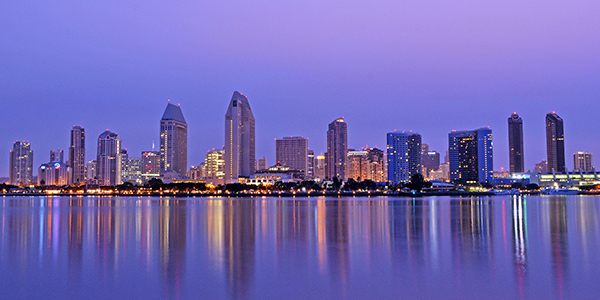By Hudson Sangree
The San Diego City Council approved a plan Tuesday to create California’s second largest community-choice aggregator and the first providing electricity to all the customers of a major city.
“Today represents a monumental opportunity,” San Diego Mayor Kevin Faulconer told the councilmembers as he introduced a plan that’s been working its way through city government for the past year.
“Community choice is really the culmination of our climate efforts,” he said. “We will have full control about where we purchase power from. It will be clean energy.”
The joint powers agreement and ordinance, approved by a 7-2 vote, require the CCA to obtain all its energy from carbon-free sources by 2035, ahead of the state’s 2045 clean-energy timeline established in last year’s Senate Bill 100.
San Diego Gas & Electric, a subsidiary of Sempra Energy, has been the city’s monopoly electricity provider for decades, but Sempra has expressed interested in getting out of the retail electricity business and becoming a wires-only company.
“SDG&E is here to support the city of San Diego,” Vanessa Mapula Garcia, public affairs manager at SDG&E, told councilmembers. “We support our customers’ right to choose an energy service provider.”
The company will continue providing transmission and distribution services to the city, as it has done for more than a century.
The new entity, tentatively called the San Diego Regional Community Choice Authority, will likely include a dozen other communities in the San Diego region. The cities of Encinitas and Chula Vista, with a combined population of more than 300,000, have already voted to join, and others are expected to follow suit. San Diego, the state’s second largest city, has a population of 1.4 million; San Diego County totals 3.3 million.
California currently has 19 CCAs, and other areas around the state are considering forming CCAs to purchase and provide power, displacing investor-owned utilities in that role. The state’s largest CCA, the Clean Power Alliance in the Los Angeles area, has about 1 million customer accounts and 3 million customers.
The state’s first CCA was Marin Clean Energy, formed in 2010, following the passage of a state law in 2002 allowing CCAs.
State officials have expressed concern about the rapid spread of CCAs and their potential effects on reliability and resource adequacy in the areas they serve. On Aug. 30, however, a group of California stakeholders filed a plan with the California Public Utilities Commission that would replace the state’s current resource adequacy framework with a “central buyer” responsible for procuring resources for multiple years.
The central buyer proposal is the product of a settlement agreement that includes SDG&E, Calpine, the Independent Energy Producers Association, Middle River Power, NRG Energy, Shell Energy North America, Western Power Trading Forum and CalCCA, which advocates on behalf of the state’s growing number of community choice aggregators. (See Calif. Participants Float ‘Central Buyer’ RA Plan.)


